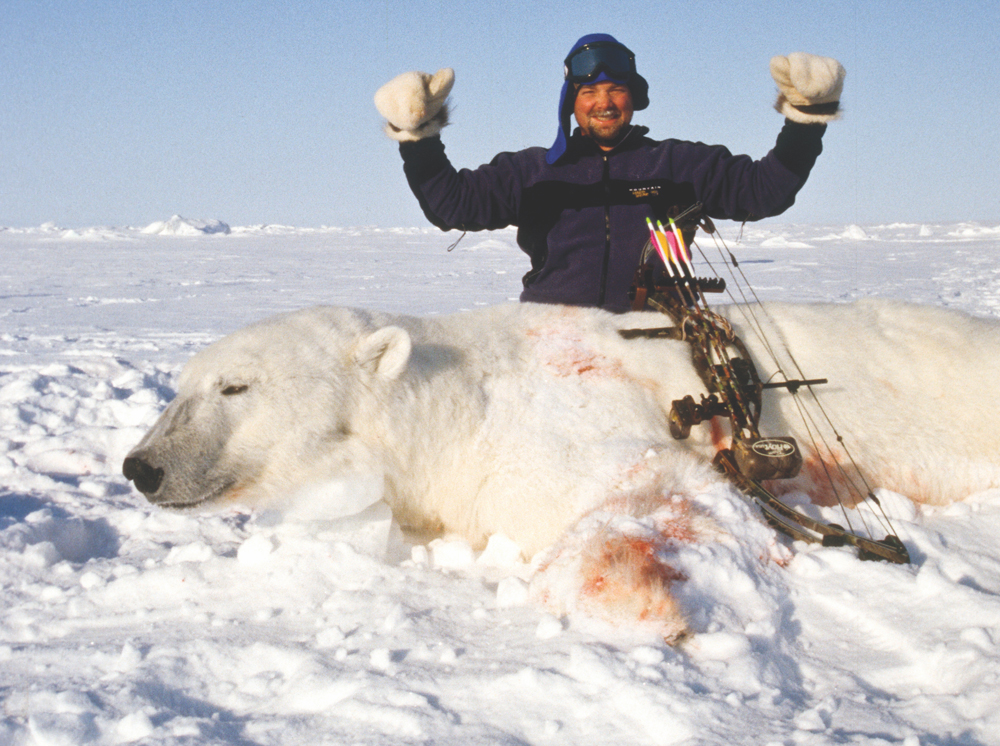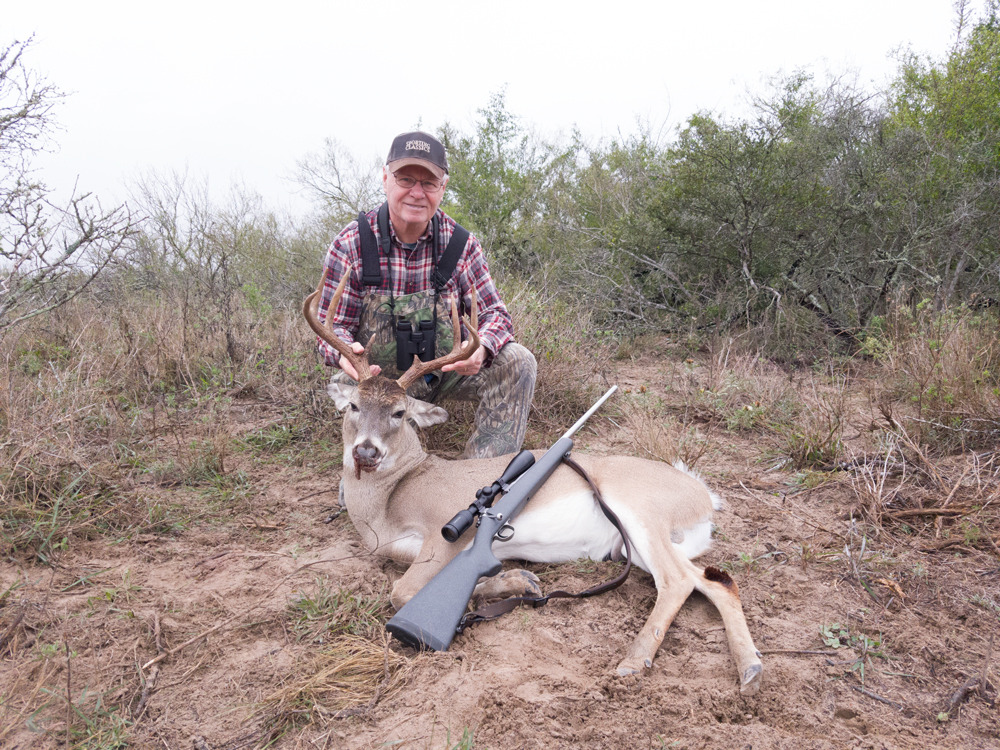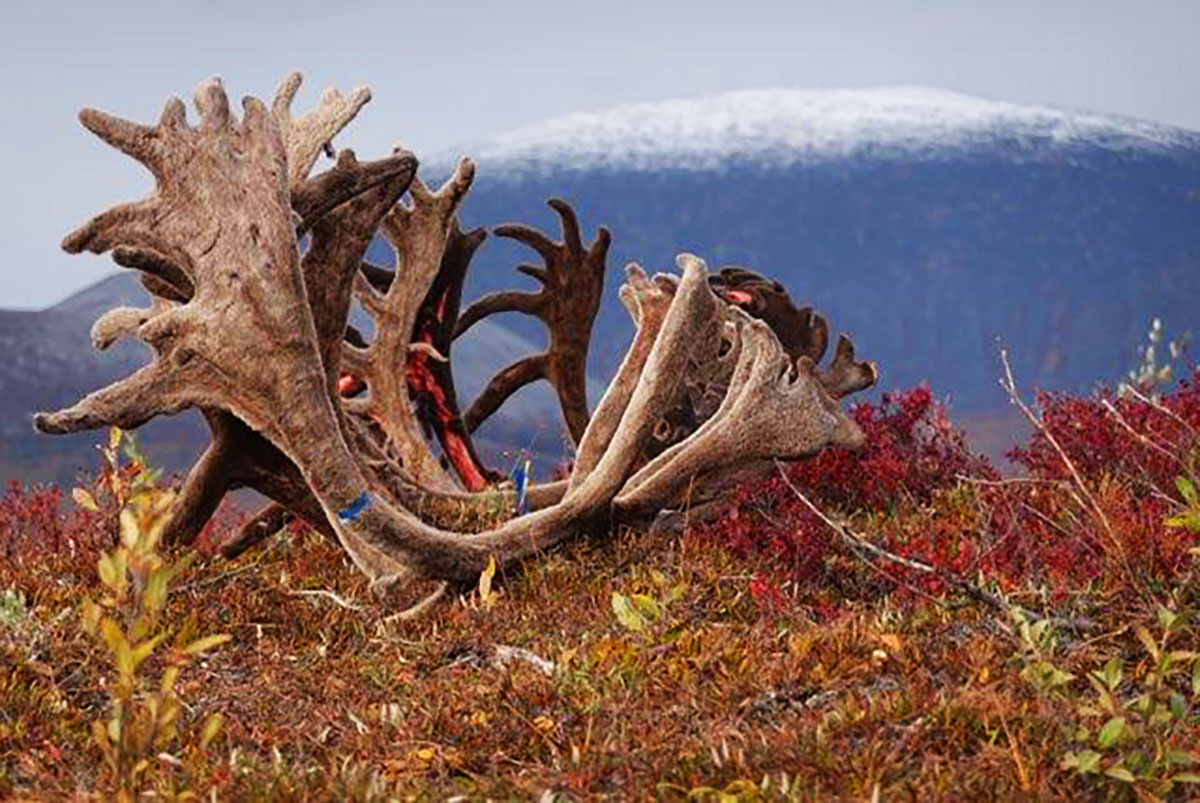The yellow-hued bear was standing on an open expanse of snow, watching us closely, as if weighing his options.
It was easy to see this was to be more of an expedition than a hunt, considering the logistics involved. Two days of commercial air travel aside, there’d been a multi-village hop in an oil-drum-filled, ear-blasting DeHaviland Otter, several snowy landings, and much shuffling of assorted cardboard-boxed trucks before reaching Grise Fiord on Ellesmere Island, Nunavut, Canada.
An outpost of perhaps 300 native Inuit, Grise Fiord is Canada’s northernmost settlement (“town” is somehow just not fitting), flanked by Greenland and the Arctic Ocean north of Baffin Bay. Yet our journey was far from complete. After a night to acclimate in Grise Fiord, some 1,700 miles from the North Pole, Alfredo Julian and I climbed into waiting sleds drawn by snow machines and larruped noisily westward across a frozen sea.
I’d known Alfredo a little more than a year, since November 2002, when we had one of those chance meetings only hunting camps can provide. But I also understood without doubt that, despite obvious trials to come, we would emerge from this 20-day adventure not only on speaking terms, but as lasting friends. I felt honored to have been invited to share in this major undertaking.
Our journey was initially enchanting, if occasionally joltingly rough, traversing a subtly beautiful world of white-on-blue extending to every horizon, across ocean bays and rocky mountain passes. As the newness subsided, it became simply something to be endured — the May sun an interminable entity hanging 24 hours a day, making it easy to lose track of time and space during the multi-day journey. We stopped occasionally to pour stashed fuel into the thirsty snowmobiles and gulp hastily prepared black tea.
Nearly 38 hours later we arrived in base camp, an impressive collection of double-walled canvas tents and long strings of tethered huskies. The first order of business was food, and then much-needed sleep, the evening passing like a fever dream amidst surroundings as strange as it was possible to be — the cold, the clicking of native tongues, howling dogs, and purring Coleman stoves.
With morning (who was to say at this point when it was night or day?) Alfredo and I loaded into waiting sleds, the two-stroke snow machines tethered and sputtering. My sled would be piloted by veteran hunter Imisho; Alfredo’s sled by teenager Jimmy; Aaron piloting a supply sled. We did not travel far before spotting musk ox. These Pleistocene throwbacks, distantly related to woolly mammoths, wear unbelievably dense, hanging fur that shields them from brutal winters, and the heavily bossed horns of Africa’s Cape buffalo. They resemble nothing else on earth.
I was along to film Alfredo’s coming polar bear hunt, and he had been kind enough to secure a musk ox permit for my troubles, a generous gift for sharing an experience that I otherwise wouldn’t have missed for anything.
I had approached this adventure knowing full well that a return trip was unlikely. I wanted to make this true once-in-a-lifetime opportunity count, so I’d spent considerable time studying the makings of a trophy musk ox. Research had revealed that the biggest musk oxen are actually found farther south — Victoria and Baffin islands, for instance — but polar bear dominated the agenda, and I was determined to make the best of what the area had to offer. To the untrained eye, all musk oxen bulls appear appealing, small details separating average bulls from exceptional.
So it was that after four hours we’d looked over perhaps 90 musk oxen without taking action. But we soon found fresh tracks through windswept snow, following them over a gentle ridge to discover four bulls pawing a distant bench. One look was all I needed. Even deadpan Imisho was enthusiastic about two of the bulls. They wore heavy bosses and deeply hooked horns.
I hadn’t given much thought to exactly how we planned to get within archery range in such desolate terrain. Now as I studied the landscape, this detail became suddenly emphatic. I was about to learn about the inherent naivety of the arctic musk ox. As it turned out, the stalk was anything but challenging, but I soon discovered that shooting in heavy insulated garb certainly could be. It was only 17 below zero, conditions our guides deemed “warm.” Thank God for that!
We shadowed the bulls on foot for a mile, pushing hard in the deep snow to pressure them until I was sweating inside my insulating duds. It was just a matter of time before the musk oxen assumed their classic “circle the wagons” defense strategy. This ploy protects them from wolves but is absolutely suicidal in regards to humans carrying modern weapons — even the cutting-edge compound bow I now toted.
We approached to within 60 yards several times, but the group would break and regroup. As we approached again I opted for the long shot, choosing a bull standing clear of the others.
On release my bowstring skittered down my puffy coverall sleeve, the arrow flying wildly. I quickly shed coverall, trying again at a long 50-something yards. The arrow struck the bull marginally, driven left by a stiff breeze, but the bull separated from the herd, taking a stand on a small knoll. The Inuit kept rifles at the ready and cautioned against a possible charge, something I wouldn’t have fathomed.
At 45 yards I began piling arrows into his lungs. Five to be exact. The Muzzy-tipped shafts blasted through ribs and heavy hair, skipping across crusted snow well beyond.
Perplexed, I turned to Imisho. “Am I shooting him in the right place?”
Imisho pointed, and I turned back to see my Boone & Crockett bull toppling. In just those few minutes out of the insulated coverall I could feel the arctic cold creeping in, my fingers turning numb. I ran back to collect my coverall and clamber in.
An hour later we found another, larger group of seven bulls. These held more tightly than my group had; safety in numbers, I assume, allowing Alfredo to advance to 23 yards. And it was just as easy as that — Alfredo delivering a single arrow before backing away at the insistence of the rifle-wielding guides.
After the bull went down, Jimmy and Aaron fetched our snow machines, forcibly herding the remaining bulls away so Alfredo could claim his prize — another Booner bull wider than my own.
So much for the musk ox — a bit anticlimactic after all the preparations I’d logged.
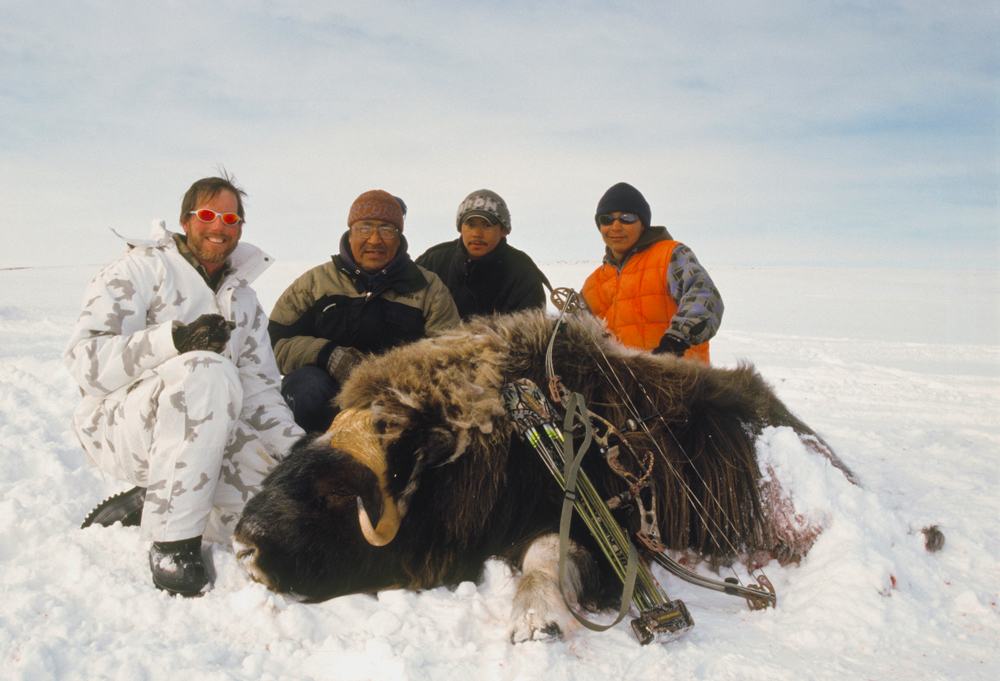
The author and his Inuit guides with a trophy bull musk ox, which they immediately skinned despite the intense cold.
THE SEARCH FOR NANUK
The 17 days to follow proceeded thusly: I was installed in a semi-enclosed sled towed by an exhaust-spewing snow machine, while lying atop copious supplies and many layers of shedding caribou hides. Caribou hair would become a regular part of my existence — floating in my tea, filling my eyes and mouth, stuck to everything I owned.
I had it better than Alfredo. The rules of fair chase dictate that mechanized transportation is strictly off-limits to polar bear hunters. Alfredo rode on an open sled drawn by a long string of huskies, open to the wind, cold sun, and flying snow.
I wore seemingly endless layers of borrowed Cabela’s wares: silk, polypropylene, wool, and down. Alfredo had donned but a single layer of long underwear, over which he wore $2,500 worth of Northern Outfitters garb designed for just these conditions.
Each morning I loaded pockets and liberally adhered Heat Factory chemical hand-warmers (thank you, Jim Yates!) to internal layers. Alfredo merely slipped into his foam-lined expedition wear. I then rode through 10 to 12 hours of bleak nothingness under a perpetual sun and minus 15 to 25 degree temperatures in relative comfort. The problem was our average days lasted about 18 hours. I could always tell to the very minute when my chemical hand-warmers began to fade. The remainder of the day I hunkered beneath the caribou skins and suffered.
Head guide Kovovow was the most successful polar bear hunter of the region, regularly producing the largest bears of the season for visiting clients. His brother Tommy towed my sled. Kovovow was tall and lean, a decided taciturn who could only be coaxed into verbal exchange by annoying him in some way. Tommy was a smaller version of his brother, but as gregarious as Kovovow was reticent.
Tommy was in charge of camp, erecting tents and cooking. Also along, towing the all-important supplies, was Charlie, a painfully quiet man wearing a perpetual smile who normally kept to himself.
Kovovow tended his dogs with a heavy hand, wielding his seal-skin whip to produce rifle-report cracks, and with similar accuracy. The huskies were almost like wild animals that looked to Kovovow as their alpha male. While Kovovow used an axe to chop off pieces of hard-frozen seal meat, he warned me to stay away from them. They’ll bite, all right.
At exhausting days’ end, after 16 to 18 hours of traveling, stopping occasionally to climb high points and glass endlessly, we’d pause near a rearing iceberg locked in frozen ocean, finding relief from the icy wind. The numerous fissures in Norwegian Bay’s frozen sea were basking places for seals, the primary prey of polar bears.
Tommy and Charlie would work to set up a pair of double-walled canvas tents that efficiently contained heat from Coleman stoves that ran continuously. We were hunting “nights” — when the sun dipped to bring greater cold and prompted the bears to roam. We piled caribou skins atop snow and tossed on sleeping bags, my minus-45 degree Cabela’s bag deliciously thick and quickly providing the first real comfort in many hours. After dinner sleep came easy.
We’d crossed innumerable bear tracks, all wind-blown and seemingly old as the land (ice) itself, along with the fresh spoor of a female towing cubs that Kovovow had to forcibly drag the dogs away from. After two weeks on the ice, a polar bear seemed as unlikely as a winning lottery ticket. Admittedly, I’d begun counting the days toward a return to civilization — back to cutoff shorts and T-shirts and playing fetch with my Labs.
On something like the 15th day we awoke to roaring wind. I emerged from the tent to inspect the day and relieve my bladder and couldn’t get back inside fast enough. Later we gathered while Kovovow yelled into the short-wave radio that produced alien gibberish seemingly from outer space.
“Big storm coming,” Tommy related after some time. “We stay here.”
We remained there two days, until the storm subsided as fast as it had risen. Without a word, Kovovow and Charlie disappeared on snow machines, leaving us with Tommy, who taught me how to make an igloo.
Fifteen hours later Kovovow returned alone, his sun-blackened face appearing in the tent door.
“Find bear. Get ready,” he said simply.
This important information was delivered so nonchalantly that I sat waiting for the punch line to a dry-humor joke, but Kovovow had already stepped outside to tether the huskies. Alfredo and I looked at each other in disbelief, and then sprang into action.
We quickly mounted our respective rides — me on the snow machine, sitting directly behind Tommy with my video equipment, Alfredo on the slower dog sled clutching his bow — and headed away from the sun. We first discerned Charlie sitting peacefully on his machine having a smoke as if waiting for a bus, the bear standing not too far away. It was as if I were dreaming, viewing something spectral and unreal.
The yellow-hued bear was standing on an open expanse of snow, watching us closely, as if weighing his options. His sheer size was stupefying. With Tommy’s machine silenced, the boar promptly settled back into his nap. We waited while I grappled with an uncontrollable urgency, suddenly thankful for the endless daylight that couldn’t be extinguished to steal this opportunity from us.
The dog sled appeared like a mirage on the heat-shimmery horizon, and already I could hear the excited yelps of the huskies. They had scented the bear and were anxious to begin the chase. Nanuk stood, surveying the horizon with blinking, squinting eyes, his head bobbing side to side. He turned and started away in a lumbering, hip-sprung gait, not exactly hurried but not liking what he was seeing or hearing either. The huskies had quickened their standard ground-gobbling pace to bring the sled on astoundingly fast, working in powerful lunges, leaning into their harnesses, and digging frantically at the wind-packed snow. Alfredo and I exchanged thumbs-ups as they whisked past.
I expected the bear to break into a greyhounding sprint, but he continued in his blasé saunter, stealing glances over his shoulder while the dogs closed the gap in a cacophonous clamor of yelps and choppy barks. In a couple minutes they’d overtaken the bear. Tommy and Charlie cranked up their machines and followed at an idling pace, coming abreast of the dog sled and its exposed hunters.
The behemoth boar simply walked ahead of the dogs, each straining at their tethers and setting up a racket. I jogged intermittently behind the action to remove myself from the sputtering machines and to get better audio. The bear turned and rushed into the dogs ten yards in front of the hunters, scattering them backwards. Alfredo shucked his mittens and vaulted from the sled, drawing his bow as the bear turned to walk again, offering only his rear. Alfredo clamored back onto the sled and they continued, moving onto rougher shelf ice.
The bear was growing bored with this game and had begun to turn and fight with more conviction, each time Alfredo jumping off the sled to bring his bow to bear, but each time just a tad too late to get off a clean shot.
I finally caught up to the sled and jumped on with Alfredo. He asked if I had seen his mittens, which had been lost in the first rush to get off a shot. Progress had begun to slow, the dogs struggling to keep the sled moving over broken crests of ice. Kovovow turned and screamed viciously for me to get off the sled, and we all slid off and began pushing.
They caught the seemingly indifferent bear in a matter of 100 yards as I trudged behind. This time when the bear turned to fight, Alfredo anticipated the charge and was off and at full draw before the bear could turn broadside in preparation for departure. Soon a crimson stain appeared just behind the great white shoulder.
Alfredo ran forward once more and sent another arrow home. The bear rushed into the dogs, scattering them in confusion, but his legs were failing him. In a matter of minutes it was over, the bear weaving side to side and then tumbling over.
I started toward the bear, the camera running, waiting for Alfredo to enter the picture, but he remained behind me, sitting with his bare hands between his legs, writhing in pain. In the knife-edged wind, clutching the frozen aluminum riser of his compound bow, his hands were painfully frozen — frostbite that would leave his hands peeling for months to come.
In time the pain subsided enough that Alfredo developed interest in his bear, and we all walked up to take stock. And some bear it was, all ten and a half feet of him. Inside that head was buried a monstrous Boone & Crockett skull, but that was something for later.
This was a bear of a lifetime. Laughing and only semi-joking after the adrenaline and awe had subsided, Alfredo said, “I’m so glad to get him…now I don’t ever have to come back here again.”
The far northern reaches of the frozen Arctic are no place for men like us. We were both ready to go home, but that was in the seemingly distant future — a 48-hour, full-throttle sled ride into Grise; a hopscotch flight in the clattery Otter, then two days of commercial airline hell. At that moment, though, everyone was as jovial and animated as we could possibly be. Even Kovovow cracked a smile. Just a small one.
Editor’s Note: this article originally appeared in the May/June 2017 issue of Sporting Classics.
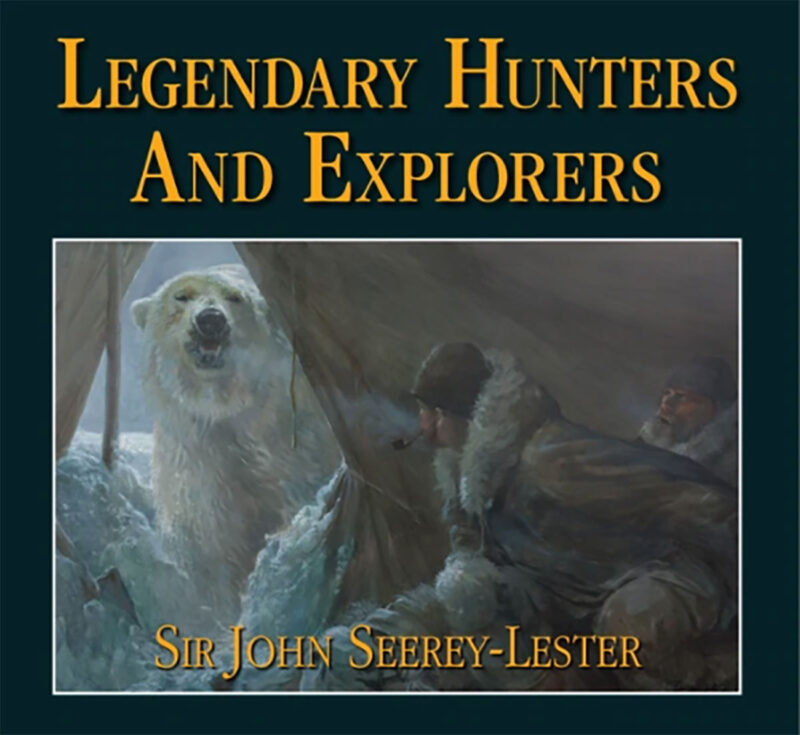 Finishing the final book in the iconic Legends series, Legendary Hunters and Explorers is the epitome of Sir John Seerey-Lester’s spirit. Filled with over 120 paintings and 45 descriptive chapters, the new 200-page book relives the compelling stories of 25 acclaimed hunters and explorers.
Finishing the final book in the iconic Legends series, Legendary Hunters and Explorers is the epitome of Sir John Seerey-Lester’s spirit. Filled with over 120 paintings and 45 descriptive chapters, the new 200-page book relives the compelling stories of 25 acclaimed hunters and explorers.
Amid his fight against cancer, Sir John Seerey-Lester was working tirelessly on his final book of the Legends series, Legendary Hunters and Explorers, when he passed away in May of 2020. He is survived by his wife and fellow artist, Suzie Seerey-Lester, who carries his torch with vigor and pride. Buy Now

